Politics
Trump and Putin exchange handshake as Alaska summit begins


Donald Trump and Vladimir Putin exchanged handshakes and smiles at an airbase in Alaska on Friday as they kicked off a high-stakes summit aimed at testing the US president’s pledge to end the ongoing war in Ukraine.
In a carefully staged arrival, both leaders landed in their presidential jets and walked under gray skies to meet on the tarmac, then proceeded along a red carpet to an honor guard salute.
As fighter jets flew overhead, a reporter called out to Putin, “Will you stop killing civilians?”
Neither leader responded as they stood at a podium marked “Alaska 2025,” before Putin unusually followed Trump into the US presidential limousine.
For the Russian president, the summit represents his first visit to Western soil since he launched the invasion of Ukraine in February 2022, which has led to tens of thousands of deaths.
Talks are now underway
Both leaders have voiced hopes of a productive meeting.
But while Trump warned he could judge it a failure after just a few minutes if Putin does not budge, the Kremlin said the two would speak for at least six or seven hours.
In recent days Russia has made battlefield gains that could strengthen Putin’s hand in any ceasefire negotiations, although Ukraine announced as Putin was flying that it had retaken some villages.
Speaking to reporters aboard Air Force One en route to Anchorage, Trump sounded a positive note. “There’s a good respect level on both sides and I think something’s going to come out of it,” he said.
Trump has insisted he will be firm with Putin, after coming under some of the most heated criticism of his presidency for appearing cowed during a 2018 summit in Helsinki.
The White House on Friday abruptly announced that Trump was scrapping a plan to see Putin alone and instead would be joined by Secretary of State Marco Rubio and his roving envoy Steve Witkoff before a working lunch.
Every word and gesture will be closely watched by European leaders and Ukrainian President Volodymyr Zelensky, who was not included and has refused pressure from Trump to surrender territory seized by Russia.
“It is time to end the war, and the necessary steps must be taken by Russia. We are counting on America,” Zelensky said in a social media post.
Trump has called the summit a “feel-out meeting” to test Putin, whom he last saw in 2019, and said Friday he was not going to Alaska to negotiate.
“I’m here to get them at the table,” he said of the Russian and Ukrainian leaders.
Russian Foreign Minister Sergei Lavrov said Moscow would not forecast the outcome of the meeting.
“We never make any predictions ahead of time,” Lavrov told Russian state TV after he reached Alaska, wearing what appeared to be a shirt with “USSR” written across it in Cyrillic script.
Trump has promised to consult with European leaders and Zelensky, saying that any final agreement would come in a three-way meeting with Putin and the Ukrainian president to “divvy up” territory.
Severe consequences
Trump has boasted of his relationship with Putin, blamed predecessor Joe Biden for the war, and had vowed before his return to the White House in January that he would be able to bring peace within 24 hours.
But despite repeated calls to Putin, and a February 28 White House meeting in which Trump publicly berated Zelensky, the Russian leader has shown no signs of compromise.
Saying he “would walk” from the table if the meeting didn’t go well, Trump told reporters he “wouldn’t be happy” if a ceasefire could not be secured immediately.
The talks were taking place at Elmendorf Air Force Base, the largest US military installation in Alaska and a Cold War facility for surveillance of the former Soviet Union.
Adding to the historical significance, the United States bought Alaska in 1867 from Russia — a deal Moscow has cited to show the legitimacy of land swaps.
Neither leader is expected to step off the base into Anchorage, Alaska’s largest city, where protesters have put up signs of solidarity with Ukraine.
The summit marks a sharp change in approach from Western European leaders and Biden, who vowed not to hold discussions with Russia on Ukraine unless Kyiv was also involved.
Politics
Indian man kills wife, takes selfie with dead body
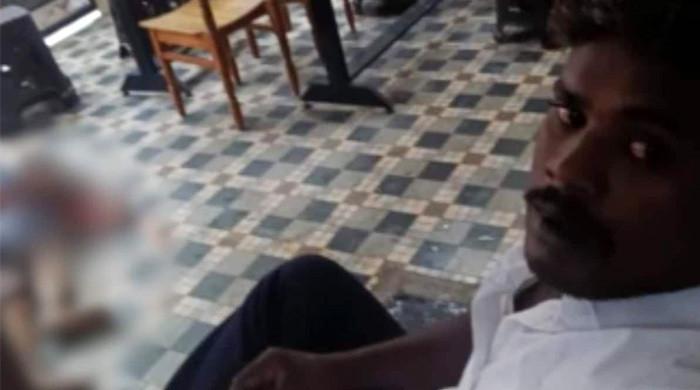
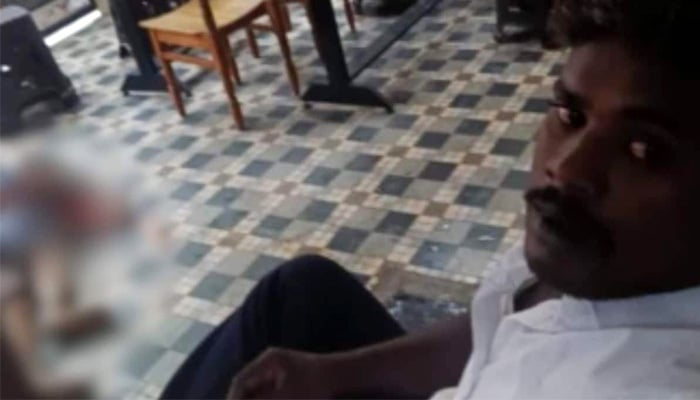
A man in India’s south brutally killed his estranged wife at a women’s hostel and took a selfie with her dead body, according to NDTV.
The victim, identified as Sripriya, employed at a private firm in Coimbatore, Tamil Nadu, had separated from her husband, Balamurugam, who was from Tirunelveli.
Police said the suspect arrived at the hostel on Sunday afternoon, concealing a sickle in his clothes, and was seeking to meet her.
They had an argument soon after the couple met, and the feud turned into a violent attack by Balamurugan, who drew the sickle and hacked the woman to death.
Furthermore, the police said he then took a selfie with her body and shared it on his WhatsApp status, accusing her of “betrayal”.
The incident spread panic and chaos in the hostel.
Following the brutal murder, the suspect did not escape from the spot but waited until the police arrived, and he was arrested at the crime scene. The murder weapon was recovered.
The initial investigation suggested that he suspected his wife of being in a relationship with another man.
Politics
Southeast Asia storm deaths near 700 as scale of disaster revealed
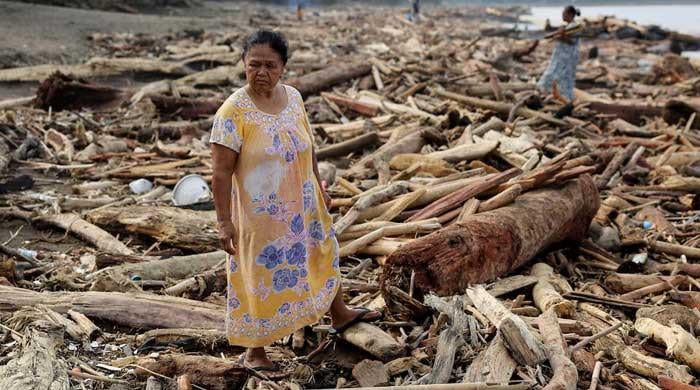
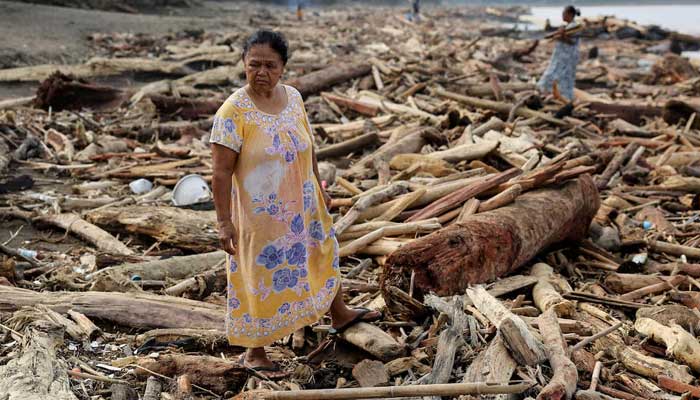
- Indonesia, Malaysia and Thailand witness large scale devastation.
- At least 176 people perish in Thailand and three in Malaysia.
- Indonesia’s death toll reaches 502 with 508 more still missing.
PALEMBAYAN: Rescue teams in western Indonesia were battling on Monday to clear roads cut off by cyclone-induced landslides and floods, as improved weather revealed more of the scale of a disaster that has killed close to 700 people in Southeast Asia.
Indonesia, Malaysia and Thailand have seen large scale devastation after a rare tropical storm formed in the Malacca Strait, fuelling torrential rains and wind gusts for a week that hampered efforts to reach people stranded by mudslides and high floodwaters.
At least 176 have been killed in Thailand and three in Malaysia, while the death toll climbed to 502 in Indonesia on Monday with 508 missing, according to official figures.
Under sunshine and clear blue skies in the town of Palembayan in Indonesia’s West Sumatra, hundreds of people were clearing mud, trees and wreckage from roads as some residents tried to salvage valuable items like documents and motorcycles from their damaged homes.
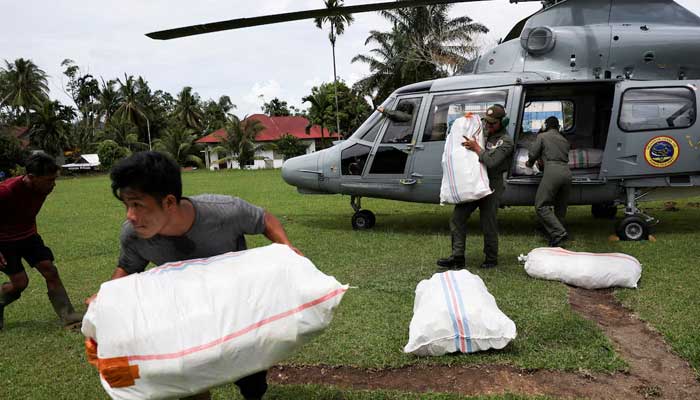
Men in camouflage outfits sifted through piles of mangled poles, concrete and sheet metal roofing as pickup trucks packed with people drove around looking for missing family members and handing out water to people, some trudging through knee-deep mud.
Months of adverse, deadly weather
The government’s recovery efforts include restoring roads, bridges and telecommunication services.
More than 28,000 homes have been damaged in Indonesia and 1.4 million people affected, according to the disaster agency.
Indonesian President Prabowo Subianto visited the three affected provinces on Monday and praised residents for their spirit in the face of what he called a catastrophe.
“There are roads that are still cut off, but we’re doing everything we can to overcome difficulties,” he said in North Sumatra.
“We face this disaster with resilience and solidarity. Our nation is strong right now, able to overcome this.”
The devastation in the three countries follows months of adverse and deadly weather in Southeast Asia, including typhoons that have lashed the Philippines and Vietnam and caused frequent and prolonged flooding elsewhere.
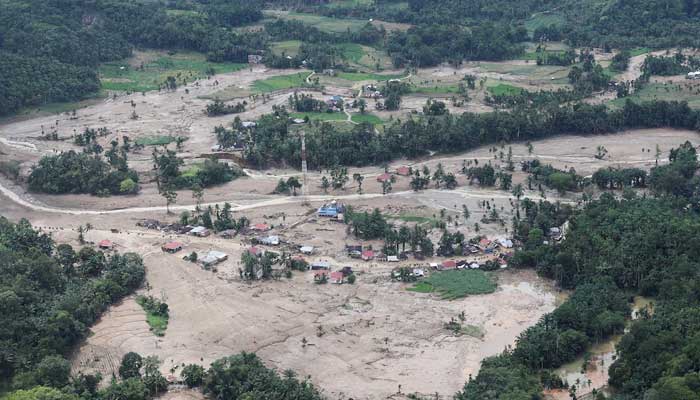
Scientists have warned that extreme weather events will become more frequent as a result of global warming.
Marooned for days
In Thailand, the death toll rose slightly to 176 on Monday from flooding in eight southern provinces that affected about three million people and led to a major mobilisation of its military to evacuate critical patients from hospitals and reach people marooned for days by floodwaters.
In the hardest-hit province of Songkhla, where 138 people were killed, the government said 85% of water services had been restored and would be fully operational by Wednesday.
Much of Thailand’s recovery effort is focused on the worst-affected city Hat Yai, a southern trading hub which on November 21 received 335 mm (13 inches) of rain, its highest single-day tally in 300 years, followed by days of unrelenting downpours.
Prime Minister Anutin Charnvirakul has set a timeline of seven days for residents to return to their homes, a government spokesperson said on Monday.
In neighbouring Malaysia, 11,600 people were still in evacuation centres, according to the country’s disaster agency, which said it was still on alert for a second and third wave of flooding.
Politics
British MP Tulip Siddiq handed two-year prison sentence in Bangladesh graft case
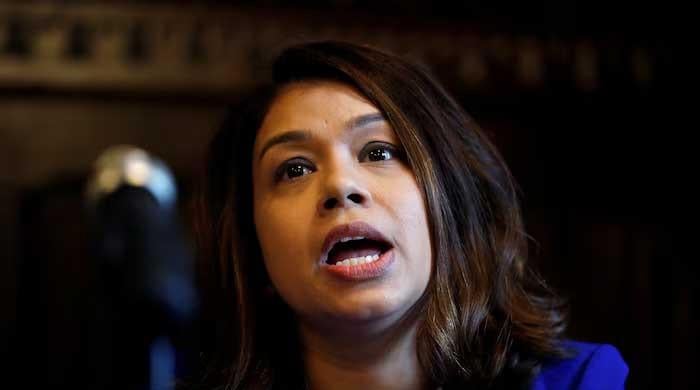
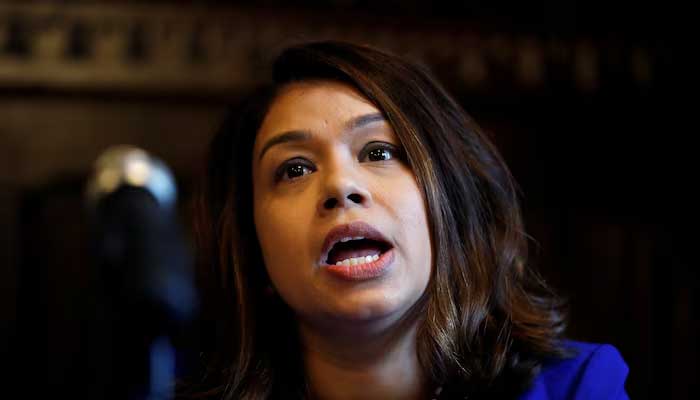
- Ex-Bangladesh PM Sheikh Hasina, sister Rehana also sentenced.
- Case relates to illegal allocation of a plot of land: local media.
- Prosecutors highlight political influence, collusion abuse of power.
DHAKA: A Bangladesh court sentenced British parliamentarian and former minister Tulip Siddiq to two years in jail in a corruption case involving the alleged illegal allocation of a plot of land, local media reported.
The verdict was delivered in absentia as Siddiq, her aunt and former Bangladesh Prime Minister Sheikh Hasina, and Hasina’s sister Sheikh Rehana — all co-accused in the case — were not present in court.
Hasina was sentenced to five years in jail and Rehana to seven, the local media reports said.
Hasina, who fled to neighbouring India in August 2024 at the height of an uprising against her government, was sentenced to death last month over her government’s violent crackdown on demonstrators during the protests.
Last week, she was handed a combined 21-year prison sentence in other corruption cases.
Prosecutors said that the land was unlawfully allocated through political influence and collusion with senior officials, accusing the three powerful defendants of abusing their authority to secure the plot, measuring roughly 13,610 square feet, during Hasina’s tenure as prime minister.
Most of the 17 accused were absent when the judgement was pronounced.
Siddiq, who resigned in January as the UK’s minister responsible for financial services and anti-corruption efforts following scrutiny over her financial ties to Hasina, has previously dismissed the allegations as a “politically motivated smear”.
Britain does not currently have an extradition treaty with Bangladesh.
-

 Sports1 week ago
Sports1 week agoWATCH: Ronaldo scores spectacular bicycle kick
-

 Entertainment1 week ago
Entertainment1 week agoWelcome to Derry’ episode 5 delivers shocking twist
-

 Politics1 week ago
Politics1 week agoWashington and Kyiv Stress Any Peace Deal Must Fully Respect Ukraine’s Sovereignty
-

 Business1 week ago
Business1 week agoKey economic data and trends that will shape Rachel Reeves’ Budget
-

 Politics1 week ago
Politics1 week ago53,000 Sikhs vote in Ottawa Khalistan Referendum amid Carney-Modi trade talks scrutiny
-

 Tech6 days ago
Tech6 days agoWake Up—the Best Black Friday Mattress Sales Are Here
-

 Fashion1 week ago
Fashion1 week agoCanada’s Lululemon unveils team Canada kit for Milano Cortina 2026
-

 Tech1 day ago
Tech1 day agoGet Your Steps In From Your Home Office With This Walking Pad—On Sale This Week






